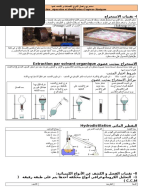Physique Des Solides Ashcroft Mermin Pdf To Excel
Question: How do I know that the flash drive that the customer will return for warranty is the same flash drive that he/she bought from me? The packaging has serial numbers: The bar code of the packaging: SDCZ50C-008G-B35W. IIIIII IIIIIII III IIIIIIIIII III llll llIII IIII - this being the bar 'code'. Cruzer blade serial number. Where can I find the product code or serial number on a SanDisk product? The following devices are serialized. Serial Number is required for product registration. The product code is located on the back or the side of the USB Flash Drive.
Physique des solides - De Neil William Ashcroft et N. Le 'Ashcroft-Mermin' reste irremplac. PDF (Physique. Read Online La Physique Des Solides: Mermin Aschcroft: 772, Physique Des Lectrons Dans Les Solides (french Edition. Worksheets into one workbook excel pdf merge spreadsheets into. [PDF] ashcroft solid state physics solution manual (28 pages) - homework and solutions for solid state, solution of ashcroft mermin, solution manual solid state physics neil w ashcroft and, solid state physics questions and answers, chapter 19 ashcroft mermin solution.

The near Infra-Red emission of the Interstellar Medium is a very puzzling subject. In the brightest regions, where spectroscopic observa tions are possible from the ground, several bands (3.3 - 3.4 - 6.2 - 7.7 - 8.6 - 11.3 m) have been observed since 1973. The absence of satisfying explanation was so obvious that they were called 'Unidenti fied IR Emission Bands'.
Physique Des Solides Ashcroft Mermin Pdf To Excel Converter

The puzzle still increased when were known the first results of the general IR sky survey made by the satellite IRAS. On a large scale, the near IR emission of the Interstellar medium was expected to be very small but it was observed to be about one third of the total IR emission for our own galaxy. The situation has moved in 1984 when it was suggested that a class of stable organic molecules, the Polycyclic Aromatic Hydrocarbons (PAH's) could be at the origin of this near IR emission. Initially based on the required refractory character of particules that should be heated to high temperature without subliming, this hypothesis leads to a sugges tive spectroscopic similarity with the observed astronomical bands. This hypothesis is attractive and it has many implications, for ins tance, the PAHs would be the most abundant organic molecules in the universe. However, many points have to be clarified and the different consequences of this suggestion should be explored.